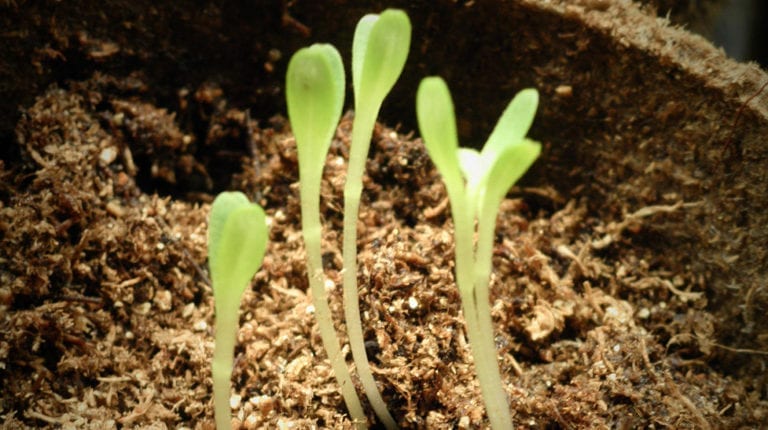
“Essentially, all life depends upon the soil … There can be no life without soil and no soil without life; they have evolved together.” — Charles E. Kellogg, USDA Yearbook of Agriculture, 1938
Sooner or later, spring will come to this part of the country. We will smell the first signs even before we see it. The perfume of spring will rise to meet us, and it will smell of soil — damp, aromatic, life-giving soil.
Soil is the fundamental stuff of life for humans and animals. It is a naturally occurring mixture of organic matter, water, air and minerals that forms on the surface of the land. Soil is the key to sustaining life on Earth.
The Food and Agriculture Organization of the United Nations has declared 2015 the Year of Soils. The FAO website provides revelatory and disquieting facts about soil. Ninety-five percent of all food comes from the soil. Feed, fiber, fuel and medicinal products all depend on healthy soil. Soil also stores carbon, preventing it from entering the air as the greenhouse gas carbon dioxide and contributing to climate change.
Thirty-three percent of the world’s soils are degraded due to human negligence and misuse. “Our soils are in danger because of expanding cities, deforestation, unsustainable land use and management practices, pollution, overgrazing and climate change. The current rate of soil degradation threatens the capacity to meet the needs of future generations,” says the FAO.
Soil is nonrenewable — its loss is not recoverable within a human lifespan. It can take hundreds to thousands of years to form one centimeter of soil from parent rock, but that centimeter of soil can be lost in a single year through erosion.
The FAO says, “The promotion of sustainable soil and land management is central to ensuring a productive food system, improved rural livelihoods and a healthy environment.” Our future depends on educating ourselves about how to protect and conserve the essential resource that is soil. Here are a few suggestions that we can put into practice to do so:
Practice organic, no-till gardening. Leaving soil intact protects soil from the ravages of wind and water and allows root systems to develop which stabilize soil. In the spring, use natural materials to smother weeds and add organic matter. Appropriate materials include decomposed leaves, finished compost, year-old cow and horse manure, and mushroom soil. Once it is time to plant, push aside the mulch and dig for your planting. Cover seeds with soil, leaving mulch to the side.
Keep your soil covered. If you want your soil to be healthy, keep it out of sight by covering, preferably with living plants. Plant cover crops like vetch, peas, and clover in your garden to overwinter and on “resting” plots. Cover crops build and protect the microbial life in soil, prevent erosion and restore nutrients depleted during the growing season.
Use your contour. Rather than planting in straight vertical rows, follow the curves of the landscape. Rows that run up and down a slope form a channel that can quickly carry away seeds and topsoil. Create swales by digging a ditch on contour and piling the dirt on the downhill side of the ditch to create a berm. Swales slow and capture runoff by spreading it horizontally across the landscape.
Make and use compost on your garden. Compost provides a rich growing medium capable of transforming nutrients into food plants can use, conditioning the soil so roots can grow deeply into it, storing water, and fighting disease and healing sick plants. You can buy bagged compost, but the best source is homemade. Typical ingredients include fruit and vegetable trimmings from your kitchen, shredded paper, leaves and grass clippings from your yard.
Be friendly to fungi. Fungi are a vital part of healthy, fertile soil. They are powerful decomposers, recycling nutrients back to plants. They infuse the soil with a mat of hyphae that hold the soil in place. To encourage fungi development, stop tilling your garden, plant and rotate a diverse mix of crops each year, and let compost cure undisturbed for a few months.
Reduce impervious surfaces. Impervious surfaces include driveways, patios and walkways. Precipitation flows freely over these surfaces, gains speed, and then increases erosion. Permeable surfaces allow water to percolate down into the soil rather than washing it away. Choose porous surfaces or paving stones rather than a concrete slab for your patio. Interrupt impervious surfaces with green space to absorb water.
Plant buffer strips along stream banks. Buffer strips are areas of vegetation near a stream that help stabilize soil and prevent erosion. They also prevent runoff and sediment from entering waterways. Stream Link Education offers well-organized tree plantings with local community members, organizations, and businesses. Check out streamlinkeducation.org for their next planting.
Our dependency soil is undeniable. Healthy soil is the key to our planet’s ability to sustain a growing population. We serve ourselves well by tending the soil.
Zoë Brittain is a thinker and an eater (not necessarily in that order), and a hopeless organic romantic with an insatiable curiosity. She is the education specialist for the Common Market where she has been roaming the aisles since she was knee-high to the bulk bins.
